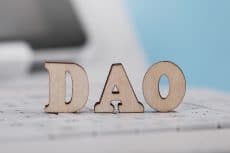

OMG Network OMG Price
-
1H
-0.01%$0.0000
24H
0.83%$0.0007
7D
6.71%$0.0054
30D
0.11%$0.0001
-
Market cap $12.01 M Full cap $12.01 M Volume 24H $584.34 K ATH $25.62
OMG Network Market Data
OMG Network price today
About OMG Network
OMG Network (first developed as OmiseGO) is a non-custodial, Layer 2 scaling solution for transferring value on Ethereum. How the protocol processes transactions is centralized, but its Plasma-based design aims to decentralize network security. It also relies on Ethereum at its final arbitration layer. Most blockchain ecosystems are limited by low throughput, high and unpredictable transaction fees, and poor user experience. The project’s team believes these are barriers that need to be overcome before businesses and developers will adopt blockchain for real-world applications, leading them to develop the OMG Network.
The core security proposition of Plasma revolves around honest users being able to exit the child chain (in other words, withdraw funds to the root chain) at any time. To exit the child chain, a user submits an exit transaction – along with an exit bond – to the root chain. The exit is subject to a “challenge period,” during which any user can prove, if applicable, that the exit is invalid. If successfully shown to be invalid, the exit is not processed, and the challenger is awarded the exit bond. This exit game is solely dependent on the root chain.
As the child chain relies on the root chain to be its ultimate arbiter, it must periodically commit a hashed version of its state changes to the root chain by way of a smart contract. As opposed to submitting individual transaction data onto the root chain, the child chain bundles transactions into a Merkle tree and submits the root hash. Beyond these core elements, there is no prescribed configuration for a Plasma chain. They can take on different consensus protocols, block validation mechanisms, or fraud proofs. The design is adaptable to the use case. OMG Network is based on the Plasma MoreVP design, an extension of Minimum Viable Plasma optimized for the settlement of payments and value exchange between users and exchanges.
The original OMG Network team (under the OmiseGO name) co-authored the original Plasma white paper with Joseph Poon and was also the first project to perform an airdrop, a way to more widely share ownership of our token with the existing Ethereum community.
OMG Network Guides
What Is a Decentralized Autonomous Organization (DAO)?
Decentralized autonomous organizations (DAO) appear to be an emerging trend that many enthusiasts seem unfamiliar with. Here is a guide to fully explain what a DAO is and other factors concerning it.

What Is Hedera Hashgraph (HBAR)?
Hedera Hashgraph is claimed to go beyond the majority of traditional blockchains. If you want to learn what Hedera Hashgraph can offer you, this guide is for you.
